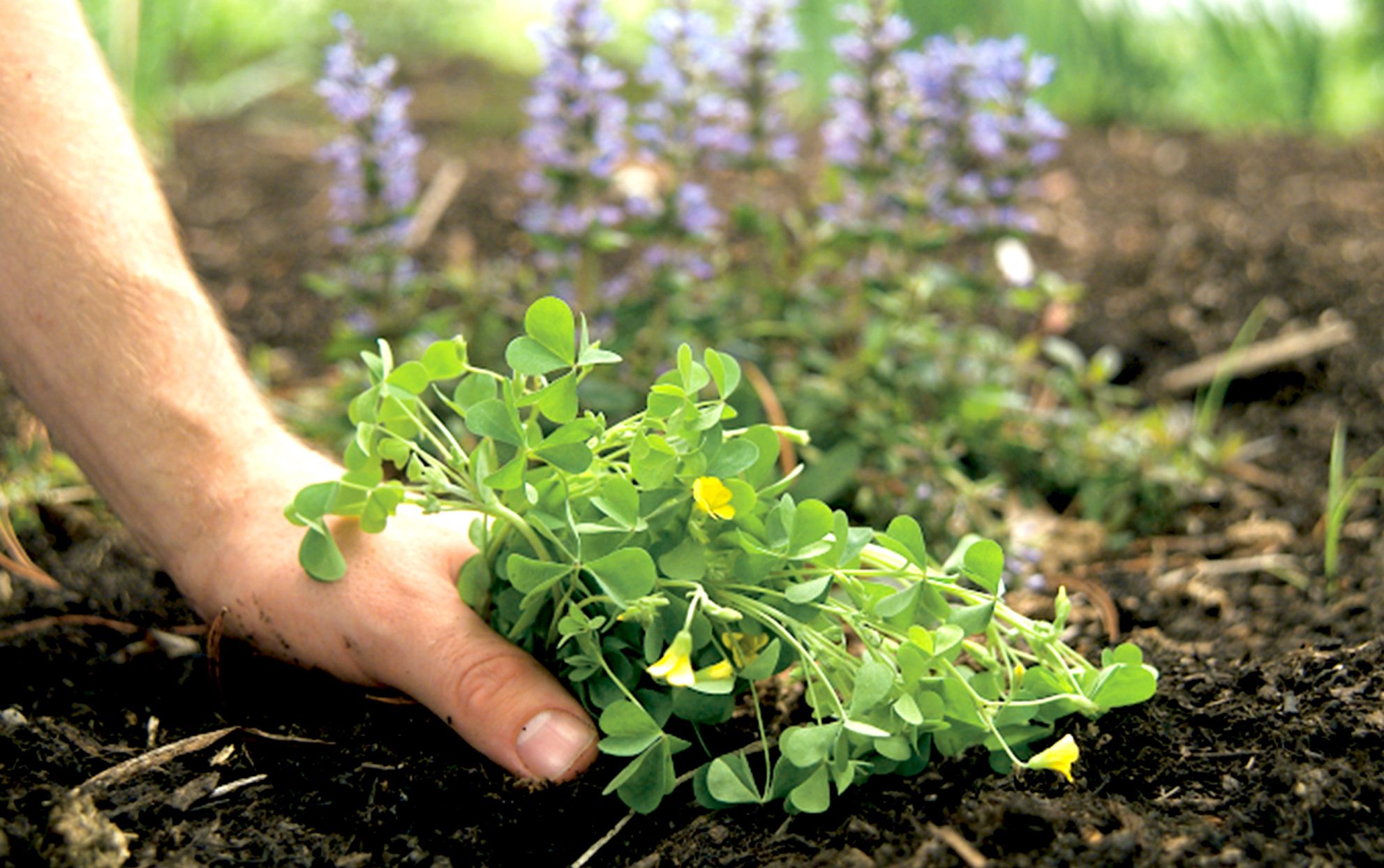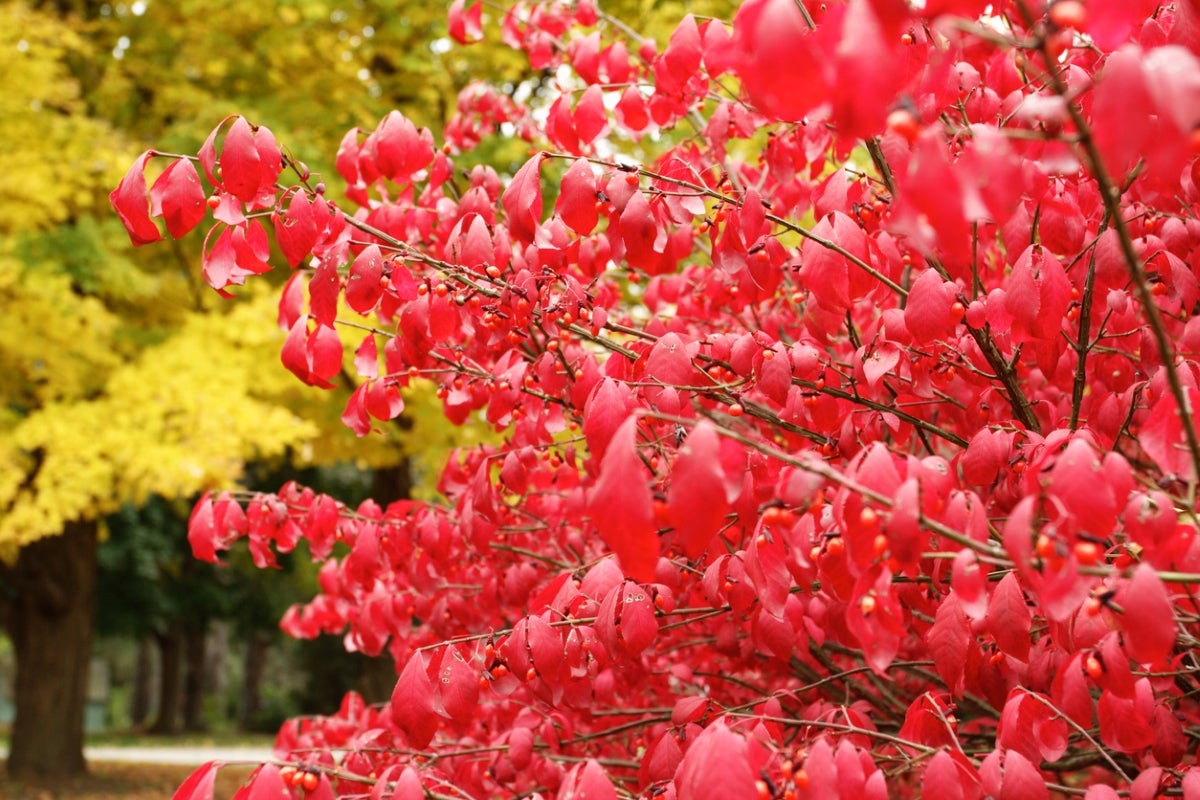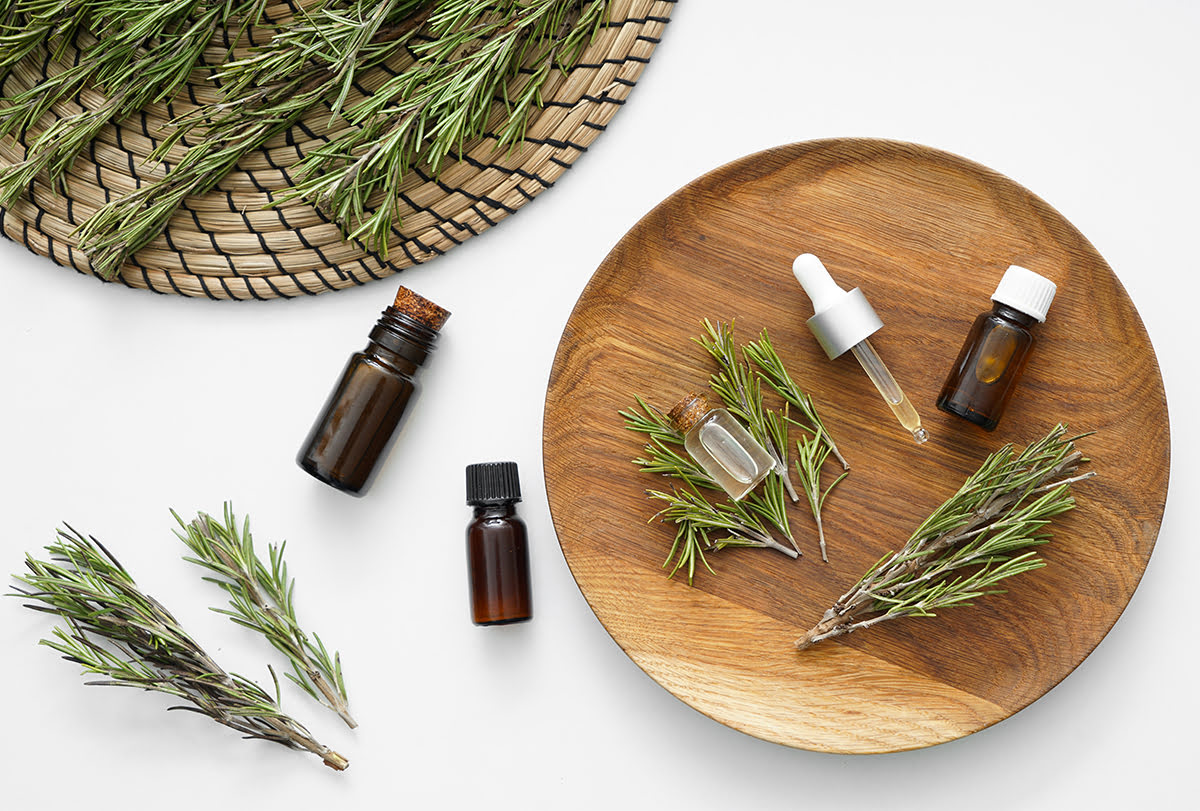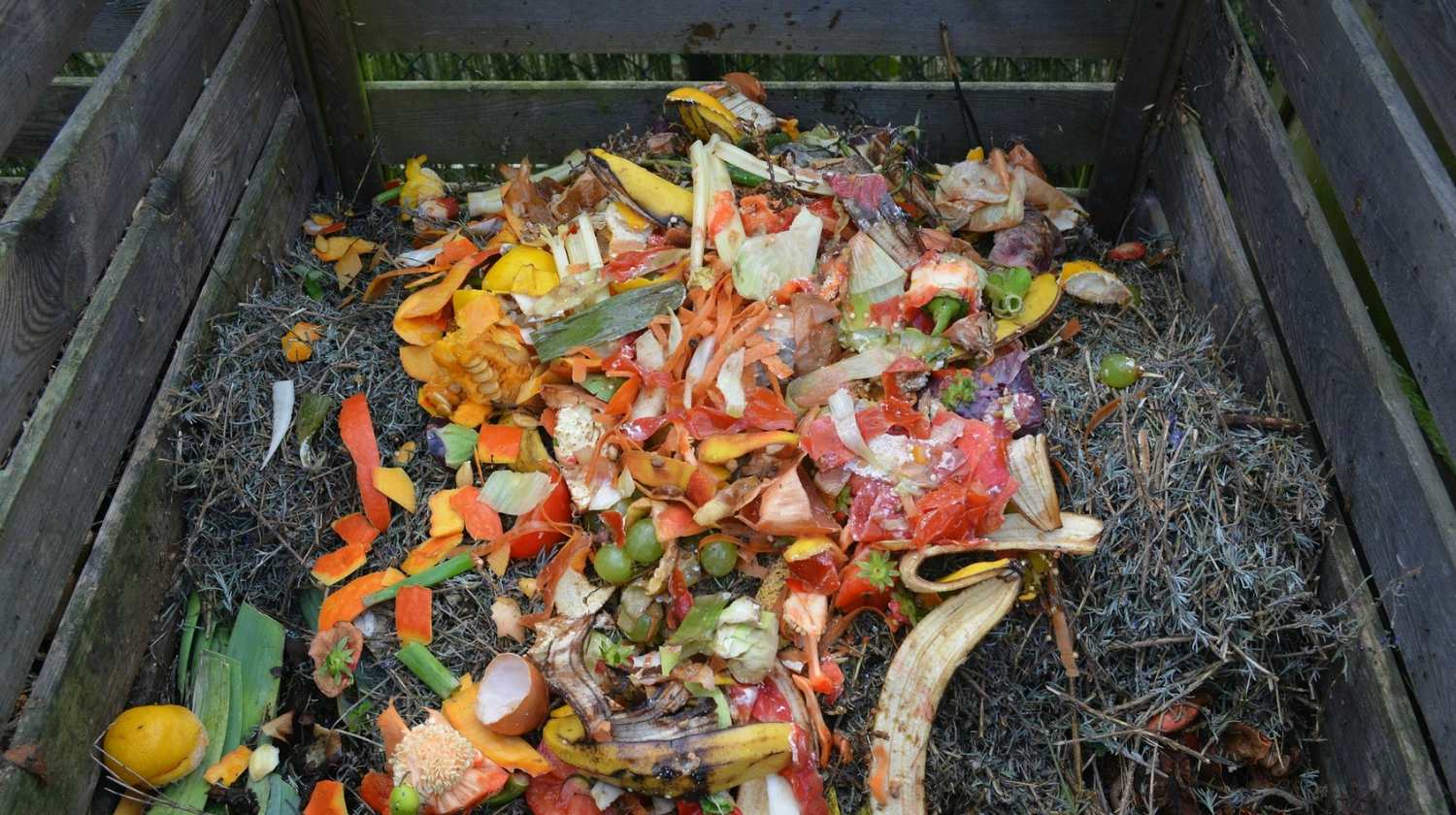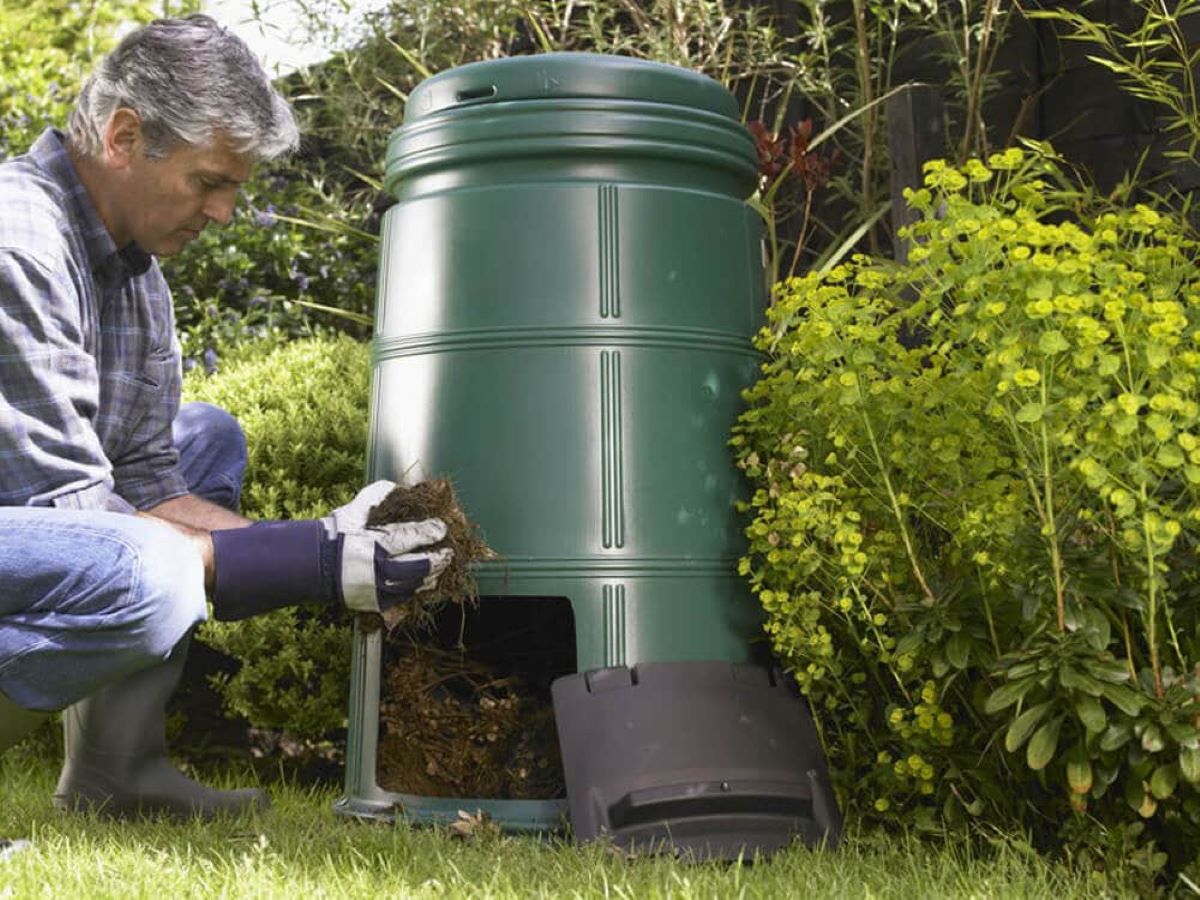Home>Gardening Techniques>Seasonal Gardening>What Can I Put On My Lawn To Kill Weeds In The Fall


Seasonal Gardening
What Can I Put On My Lawn To Kill Weeds In The Fall
Modified: January 22, 2024
Discover effective seasonal gardening tips! Learn what you can put on your lawn in the fall to kill weeds and maintain a beautiful garden.
(Many of the links in this article redirect to a specific reviewed product. Your purchase of these products through affiliate links helps to generate commission for Chicagolandgardening.com, at no extra cost. Learn more)
Table of Contents
- Introduction
- Why is Fall an ideal time to kill weeds?
- Common types of weeds in lawns
- Factors to consider before choosing a weed killer
- Organic options for weed control in the Fall
- Synthetic weed killers for Fall weed control
- Safety precautions when using weed killers
- Tips for effectively applying weed killers in the Fall
- Conclusion
Introduction
Fall is a beautiful time of year, with its crisp air, vibrant foliage, and pumpkin-spiced everything. It is also the perfect time to tackle those pesky weeds that have invaded your lawn. While you may typically think of spring as the prime season for gardening, when it comes to weed control, fall offers distinct advantages.
During the fall season, weeds are still actively growing and preparing for the dormant winter months. By targeting them now, you can prevent them from spreading and becoming a nuisance in the spring. Plus, many weeds concentrate their energy into their roots in the fall, making them more susceptible to treatments. This gives you a unique opportunity to eliminate them effectively and ensure a healthier, weed-free lawn come springtime.
In this article, we will explore the different types of weeds commonly found in lawns, discuss factors to consider when choosing a weed killer, and provide both organic and synthetic options for effective weed control in the fall. We will also offer safety precautions for handling and applying weed killers, as well as tips for maximizing their effectiveness.
Whether you are a seasoned gardener or just getting started, this comprehensive guide will equip you with the knowledge and tools to achieve a beautiful, weed-free lawn in the fall season. So grab your gardening gloves and let’s dive in!
Why is Fall an ideal time to kill weeds?
Fall is a strategic time to tackle weed control for several reasons. Firstly, as the temperature starts to cool down, the growth rate of weeds slows down as well. This means that any treatments you apply will have a greater chance of effectively targeting and eliminating the weeds.
Another advantage of tackling weed control in the fall is that many weeds are preparing for winter dormancy. They start to redirect energy towards their roots in order to survive the harsh winter conditions. This concentration of energy in the roots makes them more susceptible to herbicides and weed killers, increasing the chances of successful eradication.
Fall is also an ideal time to kill weeds because the cooler weather reduces stress on the surrounding grass and plants. This means that any treatments you apply to eliminate weeds are less likely to harm your desired vegetation. Additionally, with the impending winter months, there is less competition from new weed growth. By targeting weeds now, you can prevent them from spreading and taking over your lawn in the following spring.
By taking advantage of the unique conditions in the fall, you can effectively eliminate weeds and set the stage for a healthy, weed-free lawn in the coming seasons. So don’t wait until spring to tackle your weed problems – take action now and enjoy the benefits of a weed-free lawn throughout the year!
Common types of weeds in lawns
Weeds are a common nuisance in lawns and gardens, and they can take away from the overall beauty of your landscape. To effectively combat weeds, it’s important to understand the different types that may be lurking in your lawn. Here are some of the most common types of weeds you may encounter:
- Dandelions: Dandelions are often one of the most recognizable and persistent weeds. They have a deep taproot that can make them difficult to remove manually. Dandelions produce yellow flowers that eventually turn into fluffy white seed heads, dispersing seeds across your lawn.
- Crabgrass: Crabgrass is a warm-season annual weed that can quickly take over lawns if left untreated. It sprouts in the late spring and thrives in hot and dry conditions. Crabgrass has low-lying growth with coarse leaves and can spread rapidly, choking out your desired grass.
- Clover: Clover is a perennial weed that often appears as a three-leaf clover. While some homeowners may appreciate the lucky symbolism, clover can quickly take over lawns and compete with your grass for nutrients and water.
- Chickweed: Chickweed is a cool-season annual weed that forms dense mats. It has small, white flowers and can spread rapidly in moist and shady areas of your lawn. Chickweed is known to crowd out desirable plants and grass.
- Thistles: Thistles are prickly weeds with spiky leaves and vibrant purple or pink flowers. They have deep roots and can quickly spread if not controlled. Thistles can be particularly stubborn and may require more aggressive treatments to eliminate.
- Ground Ivy: Ground Ivy, also known as creeping charlie, is a perennial weed with small, scalloped leaves. It spreads rapidly by creeping stems and can quickly take over lawns, especially in shaded areas.
These are just a few examples of the many weeds that can invade your lawn. It’s important to identify the specific types of weeds in your yard so that you can choose the most effective method of control. By understanding the characteristics and growth habits of these common weeds, you’ll be better equipped to keep them in check and maintain a beautiful, weed-free lawn.
Factors to consider before choosing a weed killer
Choosing the right weed killer for your lawn can make a significant difference in achieving effective weed control. Before purchasing and applying any weed killer, there are several important factors to consider:
- Weed type: Different weed killers are formulated to target specific types of weeds. It’s crucial to identify the types of weeds present in your lawn and choose a weed killer that is specifically designed to eradicate them. For example, broadleaf weed killers are effective against dandelions and clover, while crabgrass killers are designed to eliminate crabgrass.
- Lawn type: Consider the type of grass you have in your lawn. Some weed killers are safe to use on all types of grass, while others may be selective and only suitable for certain grass varieties. Read the product labels carefully to ensure compatibility with your specific lawn type.
- Application method: Weed killers are available in various application forms, including concentrated liquids, ready-to-use sprays, granules, and powders. Consider your personal preference and the size of your lawn when choosing the application method. Liquid concentrates may require mixing and spraying, while ready-to-use sprays offer convenience but may be more expensive.
- Mode of action: Different weed killers work in different ways. Some systemic herbicides are absorbed by the leaves and travel through the entire weed, killing it from the inside out. Contact herbicides, on the other hand, only affect the parts of the plant they come into direct contact with. Consider the mode of action of the weed killer and choose one that aligns with your weed control goals.
- Safety: Pay attention to the safety precautions and environmental considerations of the weed killer. Read the product labels to ensure that it is safe for use around children, pets, and desirable plants. If you prefer an organic or natural option, look for weed killers that are certified organic and free from harmful chemicals.
By considering these factors before choosing a weed killer, you can make an informed decision that will yield the best results for your lawn. Remember to carefully read and follow the instructions provided with the product to ensure proper application and safety.
Organic options for weed control in the Fall
If you prefer to take an organic approach to weed control in your lawn, there are several effective options available. These methods prioritize the use of natural ingredients and environmentally-friendly practices to eliminate weeds. Here are some organic options for weed control in the fall:
- Hand-pulling: The most basic and labor-intensive method, hand-pulling weeds involves removing them manually by pulling them out from the root. This method is effective for small weed populations or for specific weeds that are difficult to control with other methods. Ensure you remove the entire root to prevent regrowth.
- Mulching: Applying a layer of organic mulch, such as wood chips or straw, to your garden beds and around plants can help suppress weed growth. Mulch acts as a natural barrier, preventing weed seeds from reaching the sunlight they need to germinate. Make sure to apply a sufficient depth of mulch to inhibit weed growth effectively.
- Vinegar solution: Vinegar can be used as a natural weed killer by spraying it directly on the weeds. The acetic acid in vinegar helps to dry out and kill the weeds. For best results, use vinegar with a higher acetic acid concentration, such as horticultural vinegar, and apply on a sunny day when the weeds are actively growing.
- Boiling water: Boiling water is a simple and effective method to kill weeds. Carefully pour boiling water directly on the weeds, ensuring that you only target the weeds and avoid desirable plants. This method is particularly suited for sidewalk cracks and areas where you don’t want any vegetation.
- Homemade herbicidal soap: Create a homemade weed killer by mixing liquid dish soap or castile soap with water. Apply the solution directly to the leaves of the weeds, making sure to thoroughly coat the plant. The soap helps to break down the protective coating of weed foliage, causing dehydration and eventual death.
While organic methods may require more effort and time compared to synthetic weed killers, they offer the advantage of being safe for the environment, pets, and beneficial insects. They also allow you to maintain an organic approach throughout your gardening practices. Experiment with these organic options to find the ones that work best for your specific weed control needs.
Synthetic weed killers for Fall weed control
If you’re facing a significant weed problem in your lawn or prefer a more aggressive approach to weed control, synthetic weed killers can be a viable option. These products are formulated with chemicals that specifically target and eliminate weeds. Here are some synthetic weed killers commonly used for fall weed control:
- Selective herbicides: Selective weed killers are designed to target specific types of weeds while leaving your desired grass unharmed. They work by targeting broadleaf weeds, such as dandelions and clover, while sparing grassy plants. Selective herbicides are available in both liquid and granular forms and are typically applied with a sprayer or spreader.
- Non-selective herbicides: Non-selective weed killers, such as glyphosate-based products, are designed to kill a wide range of weeds, including both broadleaf and grassy weeds. They are effective for eliminating stubborn weeds and can be used in areas where you want to completely clear vegetation, such as preparing a new planting area or eradicating weeds from pavement cracks.
- Pre-emergent herbicides: Pre-emergent herbicides form a chemical barrier in the soil to prevent weed seeds from germinating. These weed killers are typically applied in early fall before the weeds have a chance to sprout. Pre-emergent herbicides are useful for controlling annual weeds, such as crabgrass and chickweed.
- Post-emergent herbicides: Post-emergent herbicides are applied to actively growing weeds. They work by targeting the leaves and other above-ground parts of the weeds. These weed killers are suitable for controlling established weeds and may require multiple applications to achieve complete eradication.
- Systemic herbicides: Systemic weed killers are absorbed by the weeds and then systematically move through the entire plant, including the roots. This ensures that the weed is completely eliminated. Systemic herbicides are effective for controlling both annual and perennial weeds and are often available as concentrated liquids that can be mixed and applied with a sprayer.
It’s important to note that synthetic weed killers contain chemicals that may have environmental and health concerns. When using these products, it’s crucial to follow the instructions carefully and take precautions to protect yourself, children, pets, and the environment. Additionally, consider spot-treating weeds rather than blanket applications to minimize the overall use of synthetic herbicides.
Remember to always read the product labels for proper application rates, timing, and safety precautions. When used responsibly, synthetic weed killers can be an effective tool in your fall weed control arsenal.
Safety precautions when using weed killers
When using weed killers, it’s crucial to prioritize safety to protect yourself, others, and the environment. These chemical products can be toxic if not handled or applied correctly. Here are some important safety precautions to follow when using weed killers:
- Read and follow instructions: Carefully read and follow the instructions provided on the product label. Different weed killers have varying application rates, mixing instructions, and safety precautions. Adhering to these instructions ensures proper and safe use of the product.
- Protective clothing and gear: Wear appropriate protective clothing and gear when applying weed killers. This typically includes long-sleeved shirts, long pants, closed-toe shoes, gloves, and safety goggles or glasses. These items protect your skin, eyes, and respiratory system from potential chemical exposure.
- Choose the right weather conditions: Select a calm day with minimal wind to apply weed killers. This helps prevent the product from drifting onto desirable plants or unintentionally coming into contact with people or pets. Avoid applying weed killers during hot and dry conditions, as this can increase the potential for vaporizing and harming non-target plants.
- Keep children and pets away: Keep children and pets away from the treated area until the weed killer has dried or as indicated on the product label. Store weed killers in locked cabinets or high shelves to prevent accidental ingestion or exposure.
- Proper disposal: Dispose of empty weed killer containers following local regulations. Do not reuse or repurpose containers for other purposes, as there may still be residual chemicals inside. If you have leftover weed killer, contact your local hazardous waste facility for proper disposal methods.
- Environmental considerations: Consider the impact of weed killers on the environment. Avoid applying weed killers near bodies of water or in areas where runoff can occur. This helps prevent the chemicals from entering water sources and potentially harming aquatic life. Additionally, consider using organic or natural alternatives to minimize the impact on the environment.
By following these safety precautions, you can ensure the safe and responsible use of weed killers. Taking the necessary steps to protect yourself, others, and the environment will help you achieve effective weed control while minimizing any potential risks.
Tips for effectively applying weed killers in the Fall
Applying weed killers in the fall requires careful consideration and proper techniques to maximize their effectiveness. Here are some tips to help you effectively apply weed killers during this season:
- Timing: Apply weed killers when the weather is favorable and weeds are actively growing. Aim to treat weeds on a day without rain in the forecast. Ensure that temperatures are within the recommended range specified on the product label.
- Follow the label instructions: Read and follow the instructions provided on the product label. Pay attention to the recommended application rates, mixing instructions (if applicable), and any specific precautions or guidelines.
- Spot treatment: Instead of applying weed killers to the entire lawn, focus on spot treating areas with the highest weed density. This helps to minimize the overall use of weed killer and reduce the risk of harming desirable plants.
- Proper dilution: If using a concentrated weed killer, ensure that you properly dilute it according to the instructions. Use a measuring cup or sprayer specifically designed for accurate mixing to achieve the correct concentration.
- Use the right equipment: Invest in a high-quality sprayer or spreader to ensure even and precise application of the weed killer. Make sure the equipment is clean and functioning properly before use. Use a sprayer with a nozzle suitable for the type of weed killer being used.
- Apply on a calm day: Choose a day with minimal wind to avoid drift of the weed killer onto desirable plants or sensitive areas. Wind can carry the herbicide to unintended locations, leading to damage to non-target plants.
- Avoid mowing before application: Refrain from mowing your lawn for a few days prior to applying the weed killer. Longer weeds provide a larger surface area for the herbicide to make contact and be absorbed effectively.
- Follow-up treatments: Depending on the type of weed killer used, you may need to apply a second treatment after a specified period of time. This ensures that any weeds missed in the initial application are targeted for complete eradication.
- Monitor and maintain: After applying the weed killer, monitor your lawn regularly to assess the effectiveness of the treatment. Remove any dead weeds or debris from the lawn to prevent new weed growth and promote a healthier environment for your desired plants.
By following these tips, you can enhance the effectiveness of your weed killer applications in the fall. Consistent and proper application, along with regular maintenance, will help you achieve a weed-free lawn and create an ideal environment for healthy grass to thrive.
Conclusion
As fall approaches, taking proactive steps to control weeds in your lawn can greatly benefit the health and aesthetics of your outdoor space. By targeting weeds in the fall, you can capitalize on their vulnerability and prevent them from spreading and causing further damage in the coming seasons.
Whether you choose organic options or synthetic weed killers, it’s important to consider factors such as weed type, lawn type, and application method before making a decision. This will ensure that you choose the most suitable weed control method for your specific situation.
When using any weed killer, safety should be a top priority. Follow the instructions provided on the product label, wear appropriate protective gear, and take precautions to safeguard yourself, children, pets, and the environment.
By effectively applying weed killers in the fall, you can greatly enhance their effectiveness. Following the recommended timing, spot treating heavily infested areas, and using the right equipment will help you make the most of your weed control efforts.
In conclusion, fall is an ideal time to tackle weed control in your lawn. By understanding the different types of weeds, considering the factors for choosing a weed killer, and observing safety precautions, you can achieve a healthy, vibrant, and weed-free lawn in the coming seasons. So gear up and take action to transform your lawn into a beautiful oasis where weeds are kept at bay.
